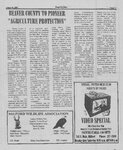Dodge City News | 1994-06-10 | Page 1
| Type | issue |
| Date | 1994-06-10 |
| Paper | Dodge City News |
| Language | eng |
| City | Milford |
| County | Beaver |
| Rights | In Copyright (InC) |
| Rights Holder | Alice Smith, Milford, Utah |
| Publisher | Digitized by J. Willard Marriott Library, University of Utah |
| ARK | ark:/87278/s6b052nv |
| Reference URL | https://newspapers.lib.utah.edu/ark:/87278/s6b052nv |
Page Metadata
| Type | page |
| Date | 1994-06-10 |
| Paper | Dodge City News |
| Language | eng |
| City | Milford |
| County | Beaver |
| Page | 1 |
| Reference URL | https://newspapers.lib.utah.edu/ark:/87278/s6b052nv/30142194 |














